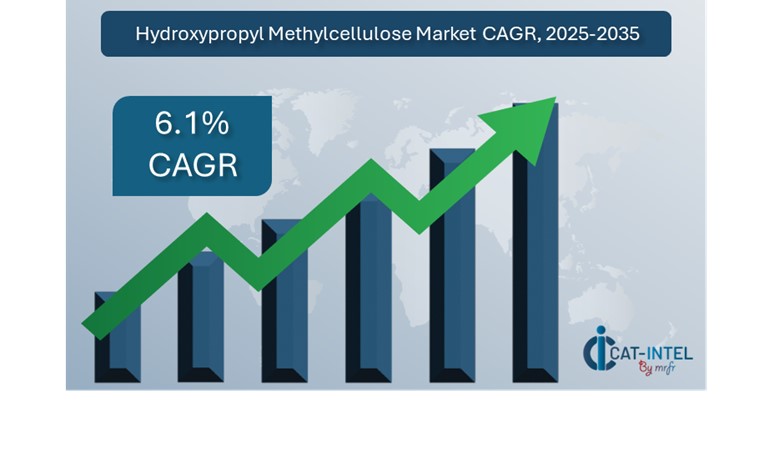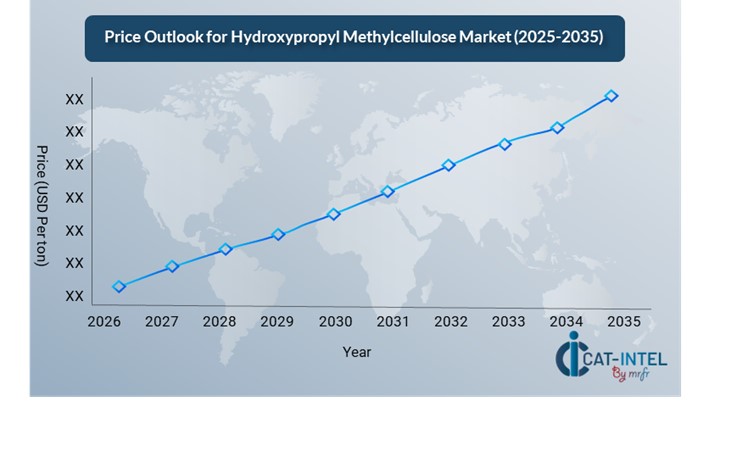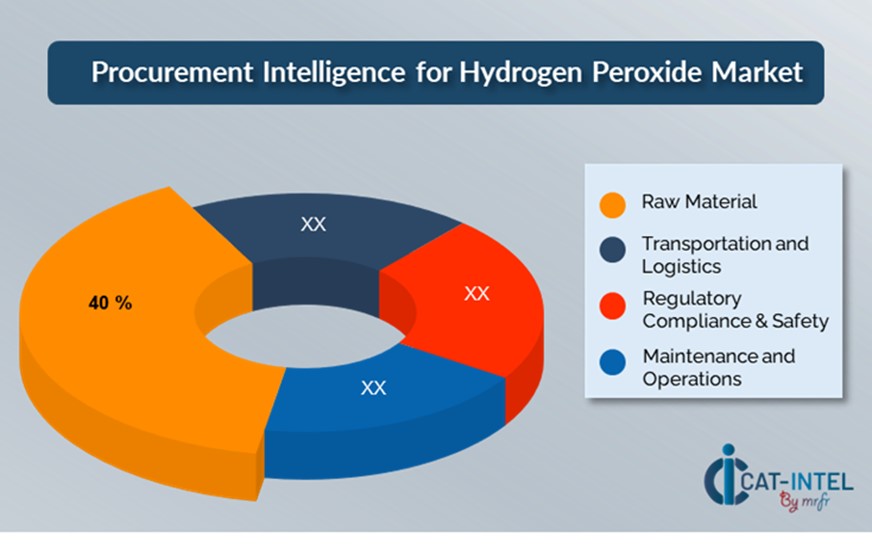Hydroxypropyl Methylcellulose Market Overview
The global Hydroxypropyl Methylcellulose (HPMC) market is expanding rapidly, driven by rising demand in industries such as pharmaceuticals, construction, food & drinks, and personal care. This market covers a wide range of HPMC products, including powder, liquid, and gel formulations, for use in a variety of applications and sectors. Our research presents a detailed examination of procurement trends, with an emphasis on cost-cutting techniques and the increased use of innovative technology to streamline procurement and operations.
Key prospective challenges in the HPMC market include controlling production costs, assuring product quality and consistency, adhering to regulatory standards, and implementing new manufacturing techniques. Digital solutions for supply chain management and innovative sourcing strategies are becoming increasingly important to optimize HPMC procurement, ensuring organizations can fulfil growing demand while staying competitive. As global demand rises, firms use market information to increase operational efficiency, product quality, and risk mitigation, resulting in long-term market success.
Market Size: The global Hydroxypropyl Methylcellulose market is projected to reach USD 8.91 billion by 2035, growing at a CAGR of approximately 6.1% from 2025 to 2035.

Growth Rate: 6.1%
- Sector Contributions: Growth in the market is driven by:
- Manufacturing and Supply Chain Optimization: Real-time data and process integration are crucial for optimizing manufacturing and supply chains, as firms prioritize operational efficiency.
- Retail and E-Commerce Growth: HPMC demand is increasing in the retail and e-commerce sectors, especially for personal care and food packaging.
- Technological Transformation: The HPMC market is experiencing technological developments, including automation and real-time monitoring systems, that improve production efficiency and product uniformity.
- Innovations: Innovations: Modular HPMC formulations enable enterprises to select and incorporate only necessary components for their specific product applications.
- Investment Initiatives:Businesses are investing in innovative manufacturing technologies and digital platforms, including cloud-based tools, to minimize infrastructure costs and improve operational flexibility.
- Regional Insights: Asia Pacific and North America continue to dominate the worldwide HPMC market due to strong manufacturing capabilities, digital infrastructure, and increased adoption of modern production technologies.
Key Trends and Sustainability Outlook:
- Cloud Integration: Cloud integration improves forecasting, real-time tracking, and resource management, leading to more efficient operations throughout the value chain.
- Advanced Features: AI, IoT, and blockchain technologies improve decision-making, automation, and transparency in HPMC production.
- Focus on Sustainability: Sustainability is becoming a significant priority for the HPMC business, with more companies embracing environmentally friendly methods.
- Investment Initiatives:Customized HPMC formulations are becoming increasingly popular in industries like medicines, food and drinks, and personal care.
- Data-Driven Insights: Predictive analytics, for example, in the HPMC market, can optimise raw material utilization, expedite production processes, and improve demand forecasting accuracy.
Growth Drivers:
- Digital Transformation: Digital solutions for real-time monitoring, automation, and analytics help organizations simplify production, improve product quality, and better fulfill market expectations.
- Demand for Process Automation: Automating repetitive operations, including ingredient mixing and packaging, can decrease operational bottlenecks and enhance production capacity, resulting in cost savings and improved efficiency.
- Scalability Needs:Scalable systems, including manufacturing facilities and supply chains, enable firms to meet expanding demand while maintaining quality and efficiency.
- Regulatory Compliance: The HPMC market, particularly in pharmaceutical and food production, is subject to strict restrictions.
- Globalization: Solutions that can support multi-currency, multi-lingual, and international compliance needs are critical for firms looking to enter new markets and compete on a worldwide scale.
Overview of Market Intelligence Services for the Hydroxypropyl Methylcellulose Market:
Recent evaluations of the Hydroxypropyl Methylcellulose (HPMC) market have identified significant obstacles, including high manufacturing costs and the need for product and process customization. Market intelligence studies provide meaningful insights into procurement opportunities, assisting businesses in identifying cost-saving strategies, optimizing supplier management, and improving manufacturing success. These insights are also critical for assuring compliance with industry standards and maintaining high-quality operational processes while effectively managing costs.
Procurement Intelligence for Hydroxypropyl Methylcellulose: Category Management and Strategic Sourcing
To stay competitive in the HPMC market, businesses are improving their procurement procedures through innovative sourcing, evaluation of suppliers, and performance tracking. Effective category management is critical for lowering procurement costs while maintaining a consistent supply of high-quality raw materials and components needed for HPMC production. Businesses that use actionable market knowledge can improve their sourcing strategy, negotiate favourable terms with suppliers, and establish reliable, cost-effective supply chains for their HPMC needs.

Pricing Outlook for Hydroxypropyl Methylcellulose: Spend Analysis
The pricing prognosis for Hydroxypropyl Methylcellulose (HPMC) is projected to continue fairly volatile, with fluctuations affected by a variety of variables. Key factors include technological developments in manufacturing processes, rising demand across several industries, customized specifications for specific applications, and regional pricing disparities caused by supply chain dynamics.

Graph shows general upward trend pricing for Hydroxypropyl Methylcellulose and growing demand. However, there may be fluctuations influenced by economic conditions, technological advancements, and competitive dynamic.
To effectively control costs in the HPMC industry, organizations must focus on optimizing procurement procedures and improving supplier management. Key techniques include using digital tools to monitor the market, using analytics to estimate prices, and enhancing contract administration to get better negotiating results.
Alternative pricing structures, such as bulk purchasing or long-term supplier relationships, can help to increase cost efficiency. While cost management remains crucial, organizations must prioritize scalability to meet rising demand in industries such as medicines, food production, and personal care.
Cost Breakdown for Hydroxypropyl Methylcellulose: Total Cost of Ownership (TCO) and Cost-Saving Opportunities

- Raw Material:( (50%)
- Description: HPMC pricing is heavily influenced by raw material costs, which include cellulose, propylene oxide, and other chemicals used in the synthesis process.
- Trend: Increasing the use of renewable resources in manufacturing will help control long-term costs and reduce environmental effect, which is becoming a major concern in the HPMC industry.
- Manufacturing & Production: (XX%)
- Logistics and Distribution: (XX%)
- Quality Control and Testing: (XX%)
Cost-Saving Opportunities: Negotiation Levers and Purchasing Negotiation Strategies
In the HPMC business, streamlining procurement processes and using strategic negotiation strategies can lead to significant cost savings and increased operational efficiency. Establishing long-term agreements with dependable HPMC suppliers, particularly those who provide sustainable and innovative production processes, can result in improved pricing structures and more attractive terms, such as volume-based discounts and bundled service packages. Multi-year contracts and bulk purchase agreements allow you to secure reduced rates while mitigating potential price rises over time.
Collaborating with HPMC vendors who value innovation, scalability, and quality assurance provides further advantages. Suppliers who focus on innovative manufacturing techniques, automation, and sustainability can assist organizations in lowering long-term operational costs while maintaining product consistency and compliance with industry requirements. Access to new technologies from suppliers, such as automated manufacturing systems or real-time data monitoring, can help to streamline processes and decrease costs even more. Diversifying vendor options and implementing a multi-vendor strategy can help to reduce reliance on a single supplier, mitigate risks like production delays or service interruptions, and increase negotiation strength.

Supply and Demand Overview for Hydroxypropyl Methylcellulose: Demand-Supply Dynamics and Buyer Intelligence for Effective Supplier Relationship Management (SRM)
The HPMC market is steadily expanding, propelled by rising demand in a variety of industries, including pharmaceuticals, food & drinks, personal care, and construction. Technological improvements in manufacturing, industry-specific requirements, and global economic situations all have an impact on supply and demand.
Demand Factors:
- Industrial and Technological Advances: The increased requirement for efficient manufacturing processes, quality consistency, and cost optimization is boosting demand for HPMC in a variety of industries.
- Sustainability Trends: There is a growing need for environmentally friendly and sustainable HPMC formulations, notably in the food packaging and personal care sectors.
- Industry-Specific Requirements: Certain industries, such as pharmaceuticals and food processing, require HPMC systems that are suited to strict regulatory standards and particular operational requirements.
- Integration Capabilities: There is increasing demand for HPMC suppliers that can integrate with other materials, production systems, and business operations.
Supply Factors:
- Technological Advancements: Innovations in production technology, including as automation, AI-driven quality control, and real-time monitoring, are strengthening HPMC offers and supplier competitiveness.
- Vendor Ecosystem: With a growing number of suppliers providing various HPMC formulations, ranging from large-scale producers to niche manufacturers, customers have a wide range of options.
- Global Economic Factors: Fluctuating exchange rates, commodity availability, and labor costs all have an impact on HPMC product pricing and availability.
- Scalability and Flexibility: Modern HPMC formulations are becoming more modular, allowing producers to adapt to a diverse range of applications, from smaller-scale manufacturing to huge industrial operations.
Regional Demand-Supply Outlook: Hydroxypropyl Methylcellulose

The Image shows growing demand for Hydroxypropyl Methylcellulose in both Asia Pacific and North America, with potential price increases and increased Competition.
Asia Pacific: Dominance in the Hydroxypropyl Methylcellulose Market
Asia Pacific, particularly East Asia, is a dominant force in the global Hydroxypropyl Methylcellulose market due to several key factors:
- Strong Industrial Growth: Demand for HPMC is being driven by the region's rising manufacturing base as well as the expansion of industries such as construction and pharmaceuticals.
- Large Pharmaceutical Sectors: The pharmaceutical business is growing in response to rising healthcare requirements, growing populations, and increased demand for generics and controlled-release drug formulations.
- Cost-Effective Production: Many worldwide suppliers have set up production facilities in this region to take benefit from lower operational expenses, allowing them to provide more competitive pricing.
- Increasing Consumer Demand: HPMC is utilized in a variety of formulations, notably cosmetics, food stabilizers, and thickening agents, to meet rising consumer demand in these areas.
- Government Investments: Many Asian governments are substantially spending in developing infrastructure and healthcare, which directly increases the need for HPMC in construction materials and pharmaceuticals.

Asia Pacific Remains a key hub Hydroxypropyl Methylcellulose Price Drivers Innovation and Growth
Supplier Landscape: Supplier Negotiations and Strategies
The provider landscape of the Hydroxypropyl Methylcellulose (HPMC) market is diversified and highly competitive, with a mix of large-scale multinational producers and smaller, specialised suppliers influencing industry dynamics. These vendors have a significant impact on pricing, product customisation, quality standards, and delivery capabilities. Well-established producers dominate the market with a diverse range of HPMC formulations, while niche providers focus on certain industry verticals or unique product properties such as sustainability or specialized performance characteristics.
As the need for more advanced and sustainable solutions develops, suppliers are adopting cutting-edge technology such as automation, innovative production processes, and real-time data monitoring into their businesses. These technical improvements allow suppliers to increase productivity, maintain product consistency, and achieve sustainability goals while lowering operational costs. The growing demand for customized and environmentally friendly HPMC formulations is encouraging suppliers to engage in sustainable practices and create personalized solutions to fulfil specific customer needs.
Key Suppliers in the Hydroxypropyl Methylcellulose Market Include:
- Shin-Etsu Chemical Co., Ltd.
- Dow Chemical Company
- Ashland Global Holdings Inc.
- Hercules
- Celanese Corporation
- Lotte Fine Chemical Co., Ltd.
- AkzoNobel N.V.
- Nippon Sod
- Visco Starch
- Colorcon

Key Developments Procurement Category Significant Development:
|
Significant Development |
Description |
|
Market Growth |
The HPMC market is expanding rapidly, driven by increased demand from a variety of industries including pharmaceuticals, food and beverages, personal care, and construction. To ensure regulatory compliance, demand for versatile and dependable HPMC products continues to rise, particularly in emerging markets. |
|
Cloud Adoption |
As industries, notably those in food, personal care, and pharmaceuticals, seek eco-friendly and high-performance ingredients, there is a rising shift toward sustainable and innovative HPMC formulations. |
|
Product Innovation |
HPMC is progressively being adapted with sophisticated features such as increased film-forming properties, enhanced viscosity control, and industry-specific functionality. |
|
Technological Advancements |
Manufacturing process technological improvements, such as automation and AI-powered quality control, are greatly improving HPMC production efficiency and consistency. The integration of IoT and real-time data monitoring enables manufacturers to track production quality and optimize resource utilization |
|
Global Trade Dynamics |
Changes in global trade rules, such as new tariffs, compliance standards, and developing economic policies, are influencing HPMC adoption patterns. Ensuring regulatory compliance and managing complicated supply chains are significant drivers of the demand for dependable and high-quality HPMC solutions. |
|
Customization Trends |
Pharmaceuticals, personal care, and food processing industries all demand tailored HPMC formulations that adhere to strict regulatory standards, performance objectives, and specific operating requirements. |
|
Hydroxypropyl Methylcellulose Attribute/Metric |
Details |
|
Market Sizing |
The global Hydroxypropyl Methylcellulose market is projected to reach USD 8.91 billion by 2035, growing at a CAGR of approximately 6.1% from 2025 to 2035.
|
|
Hydroxypropyl Methylcellulose Technology Adoption Rate |
Globally, over 60% of industries (pharmaceuticals, food and beverage, and personal care) are using HPMC-based solutions, with an increasing interest in sustainable and high-performance formulations. |
|
Top Hydroxypropyl Methylcellulose Industry Strategies for 2025 |
Key objectives include incorporating sophisticated manufacturing technologies, focusing on ethical manufacturing practices, extending customizing for specific industries (pharmaceuticals, food, and cosmetics), and promoting innovation in product formulas. |
|
Hydroxypropyl Methylcellulose Process Automation |
Approximately 50% of HPMC production involves automation, such as real-time monitoring and quality control systems are used to improve manufacturing efficiency along with product uniformity. |
|
Hydroxypropyl Methylcellulose Process Challenges |
Major obstacles include fluctuating raw material prices, satisfying industry-specific regulations, dealing with supply chain interruptions, and guaranteeing production scalability. |
|
Key Suppliers |
Shin-Etsu Chemical Co., Ltd, Dow Chemical Company and Ashland Global Holdings Inc. are among the leading HPMC providers, providing diversified solutions for a wide range of industries. |
|
Key Regions Covered |
Asia-Pacific and North America are major regions for HPMC adoption, with considerable demand in the pharmaceutical, food and beverage, and personal care industries. |
|
Market Drivers and Trends |
Growth is being driven by expanding demand for sustainable and environmentally friendly materials, the increased usage of HPMC in controlled-release medicine formulations, consumer interest for functional food and beverage items, and technological improvements.
|
Frequently Asked Questions (FAQ):
Our procurement intelligence services provide comprehensive market analysis for HPMC suppliers, helping you identify leading manufacturers, evaluate product quality, and understand pricing trends. We offer spend analysis, supplier evaluations, and sourcing strategies to secure high-quality HPMC at competitive prices.
We assist in evaluating the TCO for HPMC by accounting for factors such as raw material prices, transportation costs, storage, regulatory compliance, and supplier performance.
Our risk management services focus on mitigating potential risks, including supply chain disruptions, price volatility, quality inconsistencies, and regulatory changes.
Our Supplier Relationship Management (SRM) services help strengthen relationships with HPMC suppliers by fostering transparent communication, tracking supplier performance, and negotiating favourable contracts.
Best practices for HPMC sourcing include conducting market research, evaluating supplier capabilities, conducting quality assessments, and maintaining clear communication with suppliers.
Digital tools enhance HPMC procurement by streamlining supplier selection, monitoring market trends, automating contract management, and improving demand forecasting.
Our supplier performance management services track key metrics such as product quality, delivery reliability, and compliance with specifications.
We support negotiations by leveraging market data, supplier performance benchmarks, and industry pricing trends. We also recommend strategies such as long-term contracts, volume discounts, and flexible payment terms to secure better pricing and favourable contract conditions.
Our tools provide valuable insights into global HPMC market trends, supplier capabilities, raw material prices, and demand forecasts. These resources empower data-driven decision-making, ensuring you stay ahead of market shifts and secure the best HPMC products at competitive prices.
We ensure compliance by helping you assess suppliers' adherence to industry standards and regulations, such as product safety and environmental requirements.
To minimize supply chain risks, we recommend maintaining a diverse supplier base, working with suppliers who have a robust contingency plan, and considering the use of alternative sourcing strategies.
We provide performance tracking solutions that assess key metrics such as on-time delivery, product quality, and supplier responsiveness. Regular reviews of these metrics help ensure that suppliers maintain consistent performance and provide insights to optimize future sourcing decisions.
We identify suppliers who integrate sustainable practices, such as using renewable materials, minimizing carbon footprints, and reducing waste in production processes.
We conduct detailed pricing analysis by comparing supplier rates, evaluating market trends, and identifying cost-saving opportunities. Our strategic negotiation tactics, such as volume-based agreements or long-term contracts, help you secure competitive pricing for HPMC while maintaining quality.
We help manage raw material price fluctuations by advising on strategies like forward purchasing, establishing long-term contracts with fixed pricing, and sourcing from multiple suppliers to reduce reliance on any single source.








